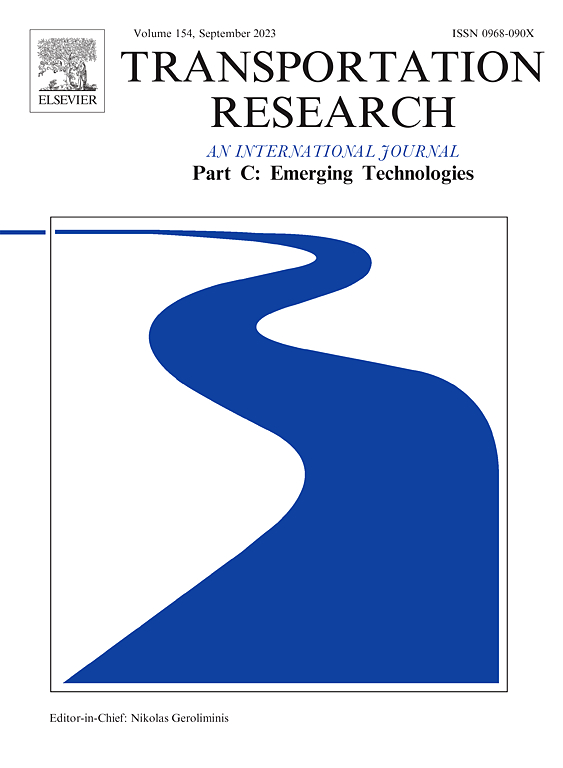Analytical model for large-scale design of sidewalk delivery robot systems with bounded makespans
IF 7.6
1区 工程技术
Q1 TRANSPORTATION SCIENCE & TECHNOLOGY
Transportation Research Part C-Emerging Technologies
Pub Date : 2025-02-01
DOI:10.1016/j.trc.2024.104978
引用次数: 0
Abstract
With the rise in demand for local deliveries and e-commerce, robotic deliveries are being considered as efficient and sustainable solutions. However, the deployment of such systems can be highly complex due to numerous factors involving stochastic demand, stochastic charging and maintenance needs, complex routing, etc. We propose a model that uses continuous approximation methods with bounded makespans for evaluating service trade-offs that consider the unique characteristics of large-scale sidewalk delivery robot systems used to serve online food deliveries. The model accurately approximates the average routing performance and the fleet size required to establish an online food delivery service without the operation details. Using the results, the model captures both the initial cost and the operation cost of the delivery system and evaluates the impact of constraints and operation strategies on the deployment. By minimizing the system cost, variables related to the system design can be determined. First, the minimization problem is formulated based on a homogeneous area, and the optimal system cost can be derived as a closed-form expression. We apply the model to neighborhoods in New York City to evaluate the cost of deploying the sidewalk delivery robot system in a real-world scenario. The results shed light on the potential of deploying such a system in the future.
求助全文
约1分钟内获得全文
求助全文
来源期刊
CiteScore
15.80
自引率
12.00%
发文量
332
审稿时长
64 days
期刊介绍:
Transportation Research: Part C (TR_C) is dedicated to showcasing high-quality, scholarly research that delves into the development, applications, and implications of transportation systems and emerging technologies. Our focus lies not solely on individual technologies, but rather on their broader implications for the planning, design, operation, control, maintenance, and rehabilitation of transportation systems, services, and components. In essence, the intellectual core of the journal revolves around the transportation aspect rather than the technology itself. We actively encourage the integration of quantitative methods from diverse fields such as operations research, control systems, complex networks, computer science, and artificial intelligence. Join us in exploring the intersection of transportation systems and emerging technologies to drive innovation and progress in the field.

 求助内容:
求助内容: 应助结果提醒方式:
应助结果提醒方式:


